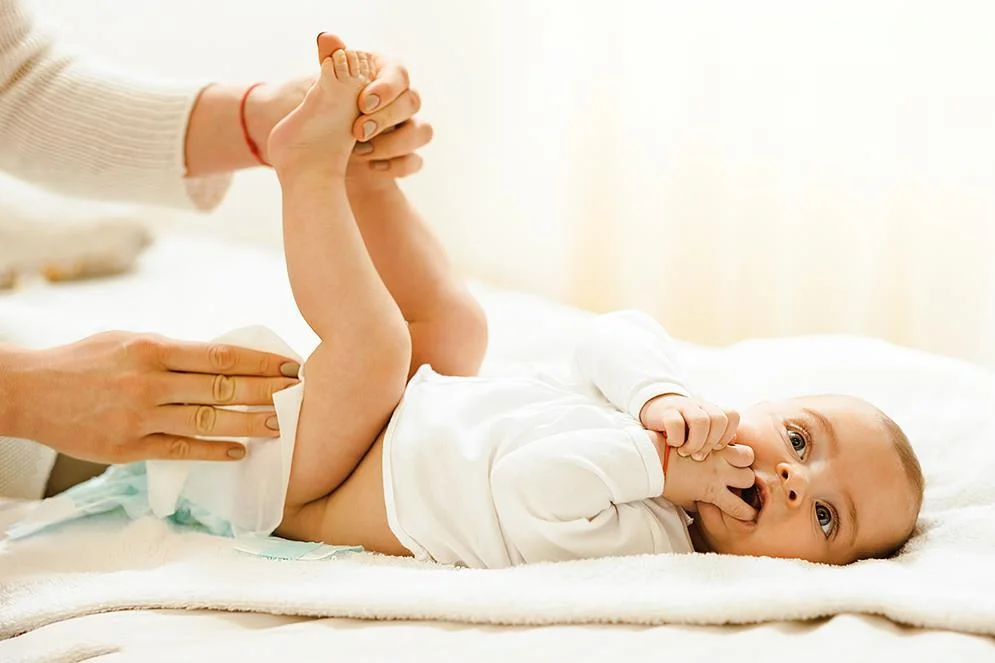A Newborn’s Diaper Guide – Size, Protection, and Changing
Welcoming a newborn into your family is an exciting and joyous time. As a new parent, one of the essential tasks you’ll need to become proficient in is diaper changing. In this comprehensive guide, we will explore the critical aspects of diapering a newborn, including choosing the right size, ensuring proper protection, and mastering the art of changing diapers.

Choosing the Right Size
Choosing the right size for your newborn’s diaper is crucial for their comfort and safety. Newborn babies come in different sizes, so it’s essential to choose diapers that fit properly for optimal comfort and leakage protection. Newborn diapers are specially designed for infants up to around 10 pounds. Some brands offer “preemie” sizes for smaller babies, so it’s essential to check your baby’s weight and choose diapers accordingly.
Keep in mind that babies grow quickly, so you may need to size up within a few weeks. Checking the fit of the diaper regularly can help prevent leaks and ensure your baby’s comfort.
Ensuring Proper Protection
Proper protection is another critical aspect of diapering your newborn. Diaper leakage can be a common concern for parents, but with the right diapers and proper fit, you can minimize the chances of leakages. Look for diapers with a snug elastic waistband and leg cuffs, as these features help prevent leaks. Additionally, consider diapers with a highly absorbent core to keep your baby dry and reduce the risk of diaper rashes.
Most diapers have an indicator line that changes color when the diaper is wet, making it easy to tell when it’s time for a change. It’s important to change your baby’s diaper frequently to ensure proper hygiene and reduce the risk of skin irritation.
Mastering the Art of Changing Diapers
Diaper changing can seem daunting at first, but with a little practice, you’ll become an expert in no time. Here’s a detailed guide to make the process easier:
Preparing for a Diaper Change
Before starting, gather clean diapers, wipes, diaper cream, and a changing mat or clean surface. Choose a well-lit and clean area to change your baby. A changing table or a diaper changing station with safety straps is ideal, but a soft, flat surface will work too.
Laying Your Baby Down
Lay your baby on their back, gently lifting their legs while supporting their head. Unfasten the soiled diaper and fold down the front half. If your baby has a bowel movement, use the front half of the diaper to gently wipe the poop away.
Cleaning Your Baby
Use wipes or a damp cloth to clean your baby’s genital area thoroughly, wiping from front to back to prevent any infection. If you have a baby girl, be sure to clean all the folds and creases.
If your baby has diaper rash or is prone to it, apply a thin layer of diaper cream to protect their skin.
Putting on a Fresh Diaper
Slide a clean diaper under your baby, carefully bringing it up between their legs. Fasten the tabs or Velcro snugly, but not too tight, to allow for proper airflow. You should be able to fit two fingers between your baby’s skin and the waistband of the diaper.
Disposing of the Soiled Diaper
Roll up the soiled diaper tightly and secure it with the tabs to contain any mess. Dispose of it in a diaper disposal system or a sealed bag.
Observing and Bonding with Your Baby
Observe your baby’s breathing, skin color, and behavior during the change, as this can indicate any underlying health issues. Diaper changing is an excellent opportunity for bonding with your newborn. Maintain eye contact, talk, and sing to your baby throughout the process to make it a positive experience for both of you.
Additional Tips
- Change your baby’s diaper frequently to ensure proper hygiene and reduce the risk of skin irritation.
- Keep extra supplies on hand, including diapers, wipes, and diaper cream, so you always have what you need when it’s time to change your baby.
- Be prepared for surprises such as unexpected pee or poop accidents. Always have spare clothes and burp cloths nearby in case of spills or leaks.
- Choose a brand that works for you and your baby, as different diapers may have different features and sizing. Don’t be afraid to experiment with different brands until you find the perfect fit.
- Consider using overnight diapers that are specifically designed to provide maximum protection and absorbency, allowing your baby to sleep soundly through the night.
Conclusion
Diapering your newborn can be a daunting task, but by following this comprehensive guide, you’ll become a diaper-changing pro in no time. Choosing the right size, ensuring proper protection, and mastering the art of changing diapers can make a significant difference in keeping your baby comfortable, healthy, and happy. Take time to bond with your little one during this essential task, and don’t hesitate to ask for help from family or friends if needed. Happy diapering!





